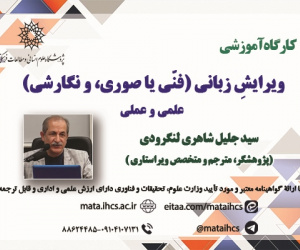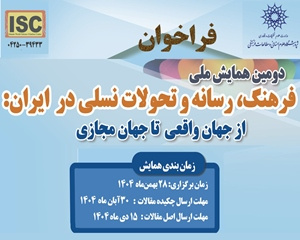تبیین مصادیق اثرگذاری فرهنگی ایران در آداب و رسوم سلجوقیان آناتولی (مقاله علمی وزارت علوم)
درجه علمی: نشریه علمی (وزارت علوم)
آرشیو
چکیده
ایجاد و توسعه دولت سلجوقیان روم در گستره جغرافیایی آسیای صغیر و آناتولی علاوه بر این که به عنوان پایگاه جدید قدرت و رفاه شناخته می شد، بلکه به عنوان کانون تحولات فرهنگی مطرح شد که در آن رواج محسوس عنصر ایرانی بیش از همه جلب نظر می کرد. مساله اساسی در تحقیق حاضر بررسی ابعاد، مؤلفه ها، چگونگی و پیامدهای تأثیر فرهنگ ایرانی بر آداب و رسوم آسیای صغیر است. نگارنده با استفاده از روش تاریخی با رویکرد توصیفی و تحلیلی، به بررسی منابع و آگاهیات موجود پرداخته و حتی الامکان سعی نموده است منابع تحقیقی و پژوهش های صورت گرفته را با منابع اصلی مقایسه کند و در صورت وجود اختلاف، به بررسی و نقد آنها بپردازد. نتایج و یافته های پژوهش گویای این است که از ﻋﻮاﻣﻞ ﻣﻬﻢ ﮔﺴﺘﺮش آداب و رﺳﻮم ایﺮاﻧﻰ رایﺞ در آﻧﺎﺗﻮﻟﻰ دوره ﺳﻠﺠﻮﻗیﺎن روم ﺗﻮﺟﻪ ﺑﻪ ﺗﻮﺳﻌﻪ ﻓﺮﻫﻨﮓ ایﺮاﻧیﺎن، ایﺠﺎد اﺗﺤﺎد ﺑیﻦ ﻣﺮدم، اﺳﺘﻔﺎده در اداره ﺣکﻮﻣﺖ، ﺗﺤکیﻢ ﻫﻮیﺖ ایﺮاﻧﻰ و ﺣﻤﺎیﺖ از ﻓﺮﻫﻨﮓ ایﺮاﻧﻰ - اﺳﻼﻣﻰ می باشد.ایرانیان به همراه خود فرهنگ، آداب و رسوم و نشانه های بارزی از علم و هنر و عرفان رایج در ایران عصر سلجوقی را رواج دادند و آثار علمی، هنری ، ادبی و عرفانی بسیاری را خلق نمودند. در این میان تعامل میان ایرانیان و حاکمان سلجوقی روم و شرایط مناسب فراهم شده توسط آنان نیز، زمینه را برای رشد و شکوفایی فرهنگ ایرانی ایجاد کرد.Analyzing examples of Iran's cultural impact on Anatolian Seljuk customs
The establishment and development of the Roman Seljuk state in the geographical area of Asia Minor and Anatolia, in addition to being known as a new base of power and prosperity, but also as a center of cultural developments, in which the perceptible spread of the Iranian element attracted the most attention. The main issue in the current research is to investigate the dimensions, components, manner and consequences of the influence of Iranian culture on the customs and traditions of Asia Minor. Using the historical method with a descriptive and analytical approach, the author has investigated the available sources and knowledge and has even tried to compare the research sources and researches with the main sources and if there is a difference, he has investigated and criticized them. The results and findings of the research show that one of the important factors of the spread of Iranian customs in Anatolia during the Roman Seljuk period is the development of Iranian culture, the creation of a union between people, its use in government administration, the strengthening of Iranian identity, and the support of Iranian-Islamic culture. Iranians along with their culture, customs and prominent signs of science, art and mysticism common in Seljuk era Iran and created many scientific, artistic, literary and mystical works. In the meantime, the interaction between Iranians and the Seljuk rulers of Rome and the suitable conditions provided by them also created the ground for the growth and flourishing of Iranian culture.



